Flanges serve as vital connectors in industrial piping systems, allowing the seamless connection of pipes, valves, pumps, and various equipment. Choosing the appropriate flange type is pivotal to ensure that your piping system operates efficiently and safely. This comprehensive guide explores different flange types, their specific applications, and important considerations to make informed decisions.
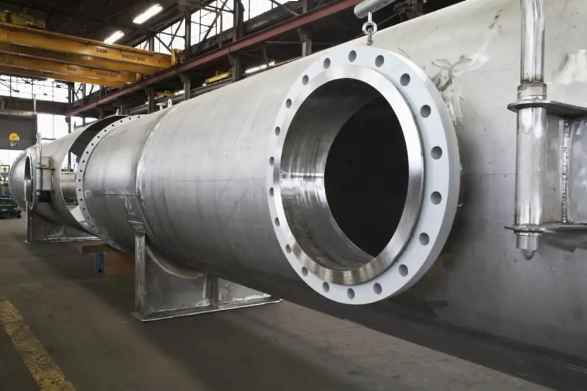
Image Source: Texas Flange
Essential Flange Types:
Let’s delve into common flange types, shedding light on their distinct applications:
Weld Neck Flanges

Image Source: Texas Flange
Applications: Industries like oil and gas, chemical, and petrochemical.
- Characterized by a tapered hub, facilitating even stress distribution.
- Ideal for high-pressure and high-temperature applications.
Slip-On Flanges

Image Source: Texas Flange
Applications: Frequently used in water treatment, HVAC, and pharmaceutical industries.
- These flanges have flat faces and are easily welded onto pipes.
- Designed for quick and straightforward installation.
Socket Weld Flanges
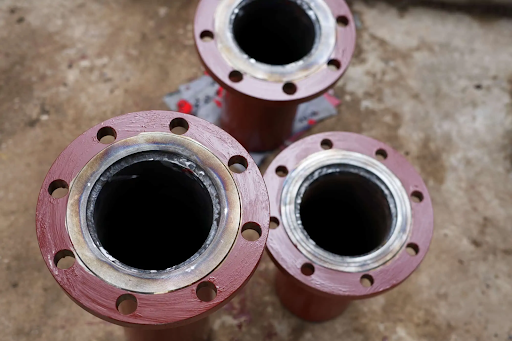
Image Source: Texas Flange
Applications: Found in food and beverage, pharmaceutical, and chemical industries.
- Feature a socket in the flange bore to accommodate the pipe.
- Suitable for high-pressure and high-temperature scenarios.
Threaded Flanges
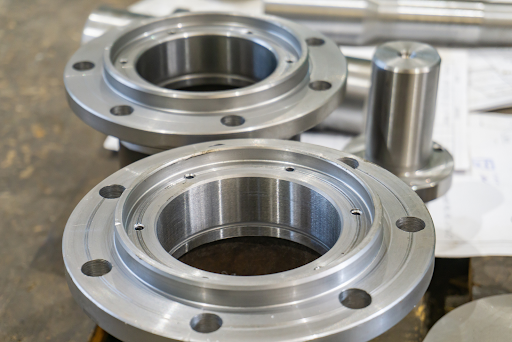
Image Source: Texas Flange
Applications: Commonly used in plumbing, HVAC, and water treatment.
- These flanges have internal threads, allowing them to be threaded onto pipes.
- Ideal for low-pressure applications, eliminating the need for welding.
Blind Flanges

Image Source: Texas Flange
Applications: Prevalent in oil and gas, chemical, and petrochemical industries.
- Used to securely seal the end of a pipe, valve, or equipment.
- Suitable for applications necessitating a temporary or permanent seal.
Lap Joint Flanges

Image Source: Texas Flange
Applications: Commonly used in food and beverage, pharmaceutical, and chemical industries.
- Designed to work alongside a stub end, ensuring easy alignment and installation.
- Perfect for applications requiring frequent maintenance and cleaning.
Reducing Flanges
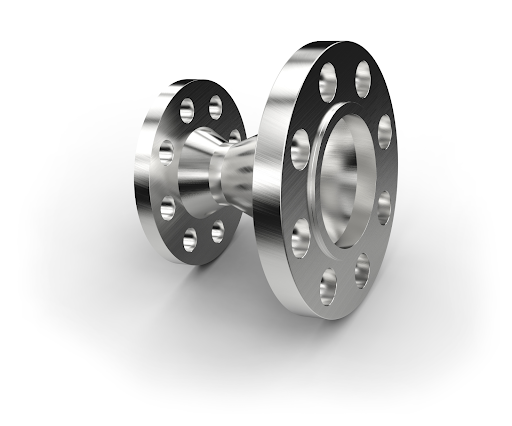
Image Source: Texas Flange
Applications: Used to join pipes of varying sizes.
- Available with various end preparations like butt-weld, socket-weld, threaded, and slip-on.
Raised Face Flanges

Image Source: Texas Flange
Applications: Widely used in in-plant applications.
- Named for their raised gasket surfaces.
- Common choice for applications within plant facilities.
Pipe Flanges
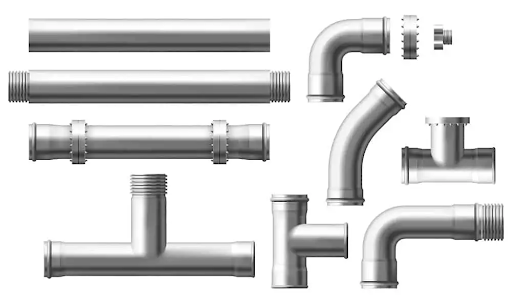
Image Source: Texas Flange
- These are utilized to connect piping and other components through bolted connections, gaskets, or threads.
ANSI Flanges
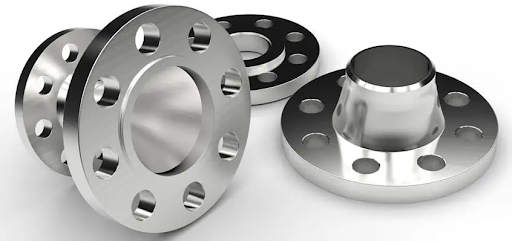
Image Source: Texas Flange
- Manufactured according to ANSI standards, ensuring high performance.
- Utilized in mechanical systems, assemblies, and structures.
Steel and Alloy Flanges
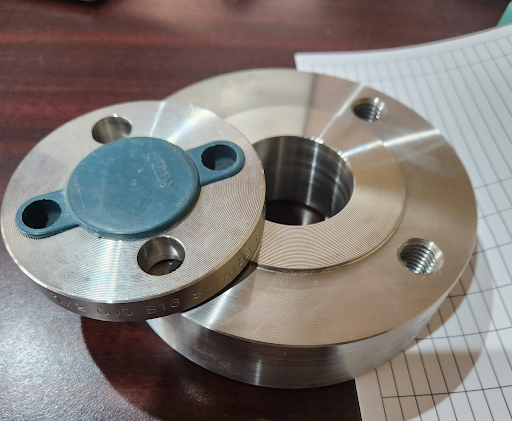
Image Source: Texas Flange
- Sought after for their anti-corrosive properties.
- Used in various applications, ranging from commercial to military use.
Stainless Steel Flanges
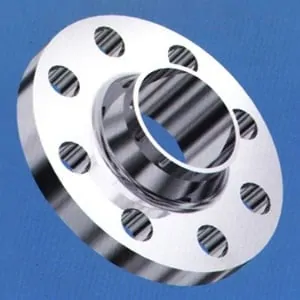
Image Source: Texas Flange
- Resistant to rust and more robust than other carbon steel flanges.
- Suitable for a wide range of applications.
Aluminium Flanges
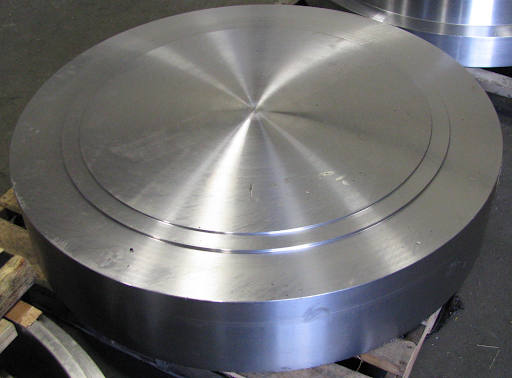
Image Source: Texas Flange
- Prized for their lightweight structure and affordability.
- Available in diverse shapes and sizes.
Expertise of Texas Flange
Texas Flange is a recognized name in the flange manufacturing industry, with over three decades of experience. They specialize in producing high-pressure pipe flanges and are known for their commitment to quality and reliability. Located in Texas, their precision-machined items are crafted at a cutting-edge manufacturing facility.
Frequently Asked Questions (FAQs):
What role do flanges play in industrial piping systems?
Flanges are essential connectors in industrial piping systems, serving as the junction point for pipes, valves, pumps, and other equipment. They facilitate easy assembly, disassembly, and maintenance of the system while ensuring a secure and leak-free connection.
Can different flange types be used interchangeably?
Flange types are designed for specific applications and have distinct features. While some flexibility exists, it’s crucial to select the right flange type that suits your system’s requirements for pressure, temperature, and materials.
How do I select the right flange for my specific application?
To choose the right flange, consider factors such as the application’s pressure, temperature, material compatibility, and the need for quick assembly or frequent maintenance. Each flange type is designed for specific conditions.
What are the typical materials used for manufacturing flanges?
Flanges can be made from various materials, including carbon steel, stainless steel, chrome moly, aluminum, and nickel alloys. The choice of material depends on the application’s demands.
Are there considerations for flange installation and maintenance?
Yes, proper installation, including bolting and gasket selection, is crucial to ensure leak-free connections. Regular maintenance, such as tightening bolts and inspecting gaskets, is essential to maintain the system’s integrity.
Do flanges have temperature and pressure limitations?
Flange types and materials have specific pressure and temperature ratings. It’s essential to select flanges that meet or exceed the conditions of your application to ensure safety and reliability.
How are reducing flanges different from other types?
Reducing flanges are designed to connect pipes of different sizes, allowing for the transition between larger and smaller pipes within a piping system.
Are there industry-specific standards for flange design?
Yes, industry organizations like ANSI provide standards for flange design. These standards ensure consistency and performance in various applications and industries.
What is the significance of flange dimensions?
Flange dimensions, including bore size, bolt circle diameter, thickness, and outside diameter, are critical for ensuring proper sizing, fit, and functionality within a piping system.
Which flange type is most suitable for high-pressure scenarios?
Weld Neck Flanges are often used in high-pressure applications due to their reinforced design, providing an even distribution of stress across the flange.
What precautions should be taken when welding flanges?
When welding flanges, it’s essential to follow proper welding procedures, maintain the correct alignment, and ensure that the welds meet the required specifications to guarantee a robust connection.
Are there environmentally friendly flange materials?
Stainless steel is known for its resistance to rust and corrosion, making it a more environmentally friendly choice for many applications.
Can you explain the purpose of raised face flanges?
Raised face flanges feature raised gasket surfaces that help create stronger seals, making them a popular choice for in-plant applications.
What applications benefit most from using aluminum flanges?
Aluminum flanges are preferred for their lightweight structure, making them ideal for applications where weight reduction is essential.
How do you ensure leak-free connections with flanges?
To ensure leak-free connections, proper gasket selection, correct bolting procedures, and regular maintenance are essential. These measures maintain the integrity of the flanged joint and prevent leaks.
Conclusion
Choosing the right flange for your industrial piping system is not only essential but also dependent on your specific requirements and the application’s nature. Whether it’s a blind flange, slip-on flange, or any other type, selecting the right flange ensures a secure and leak-free connection. By understanding their characteristics and applications, you can make informed decisions and ensure your industrial piping system’s safety and efficiency.
For more in-depth information on Industrial Flanges, consider exploring the following resources:
https://www.texasflange.com/blog/what-is-the-function-of-flanges-and-how-do-they-work/
https://en.wikipedia.org/wiki/Flange